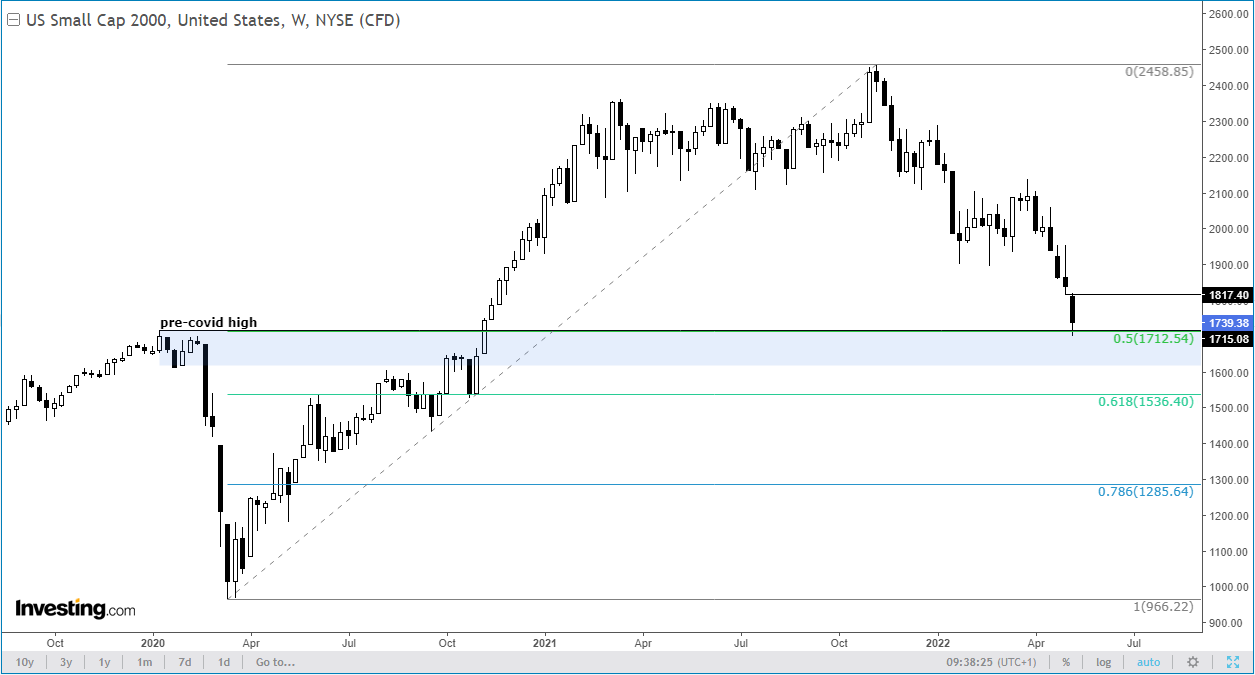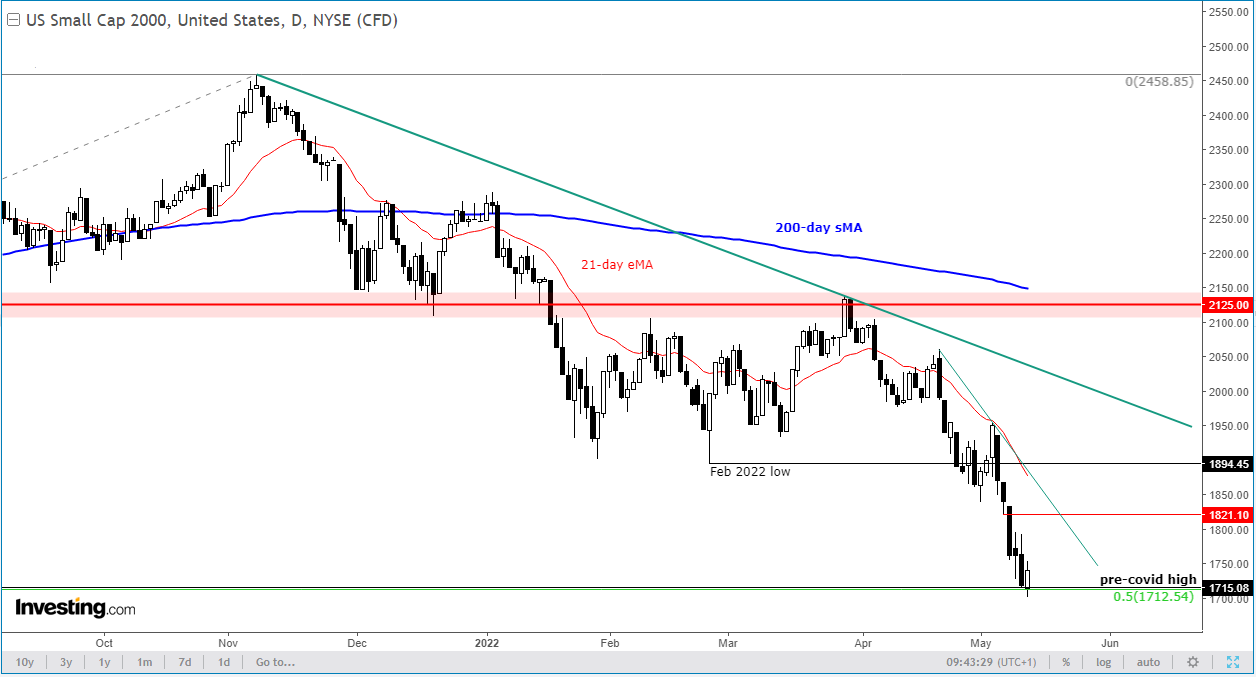Intel surges more than 8% after chipmaker’s profits top expectations
This article was written exclusively for Investing.com
We have seen an impressive recovery in global stock indices and futures over the past 24 hours or so. But the key question remains as to whether this is yet another short-cover rebound in a bear trend, or the start of something more significant?
As much as I want the markets to bottom out soon, I reckon it is the former. After all, we haven’t had any major positive fundamental news to trigger the recovery.
After giving back 50% of the gains made since March 2020, it is hardly surprising to see the Russell 2000 rebound. What’s more, the 50% retracement level of the upswing from the March 2020 low almost precisely happens to be at the same level as the pre-COVID peak at 1715, as you can see from the weekly chart:

As a minimum, we should have expected a bounce here, which is underway now. But it doesn’t necessarily mean the markets have hit a bottom. We need to see more evidence of a reversal before even entertaining the idea of a market bottom.
Indeed, short-covering rebounds have been quite common in this bear trend, amid a bearish macro back drop—rising interest rates, low economic growth prospects and high inflation. Also known as stagflation.
So, when it comes to trading any bounces such as this one, always remember that we are now dealing with a bear market where rallies tend to get sold into more often than dips being bought. Thus it is essential you take at least some profit on any dip buying of support—whether that is on an index like the Russell or an individual stock or crypto.
Stagflation concerns are mounting, and monetary conditions may have to tighten a lot further to bring price pressures lower. Though Powell has reiterated that 75-bps hikes are not a base case, the fact that both PPI and CPI eased less than expected suggests the Fed will not hit the pause button any time soon.
Let’s see what surprise the University of Michigan’s 1-Year Inflation Expectations index throughs as us later. We also have some key data from the world’s two largest economies next week as China and the US both release their latest retail sales data, which will probably reveal consumers are feeling the pinch with surging inflation.
Anyway, back to the charts and if we now look at the daily chart of the Russell, it doesn’t paint a pretty picture:

With the index making lower lows below the 21-day exponential, which is also below the falling 200-day simple average, there is no subjectivity about this bear trend.
So, I would continue to concentrate on looking for short setups near resistance, then buy the dip in this market environment until something gives way and we have a confirmed bullish reversal.
